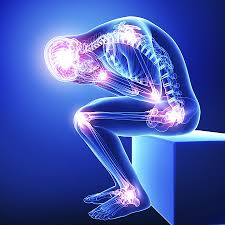Pain management is a routine intervention provided by clinicians.
Comprehensive pain management is a particularly necessary skill for home health clinicians.
As the body ages pain emerges with different disease-types. Unlike other sensory experiences, pain is influenced by ways in which signals are processed by the brain. According to the International Association for the Study of Pain, the definition of pain is subjective and defined by the person who experiences it.
In addition to keeping a pain management log - vital to determining the effectiveness of current medical pain treatment - the home health clinician should include the following pain management techniques as part of the home health careplan.
Clinicians Need to Think 'Outside the Box' When Helping Patients Cope With Pain
In addition to pain management nurse teaching, the following techniques make a big difference when helping patients  cope with pain.
cope with pain.
1. Relaxation Techniques
Clinicians need to to calm the patient psychologically and help her or him him manage pain through mental efforts. Facilitate the relaxation experience by putting the patient in a reclining position in a dark room. Then ask the patient to concentrate on any one thing. If there is distraction, tell the patient to concentrate or focus on only one word. That word could be anything like “Relax”. After that, ask him to breathe deeply for 2-3 minutes in a controlled manner. Once the patient starts to feel a relief in pain then the clinician can use imagery techniques.
 2. Altered Focus
2. Altered Focus
Ask the patient to focus on a non-painful part of the body. This helps the patient take her/his mind away from a pain source.
3. Dissociation
Through this method a patient’s mind is dissociated from the painful part of the body. This is facilitated by encouraging the patient to imagine that the painful part of the body can be separated from the entire body. For example, tell the patient to imagine that her/his source of pain is in another room and to 'tell the pain to stay there'.
4. Sensory Splitting
In this technique a patient’s pain is divided into separate sensations such as pain, burning, pins and needles. Instruct the patient to focus on feeling the heat and the pain together. Through this method, a patient is made to focus on the heating part not the hurting part.
5. Counting
An easy method of pain management is counting. Clinicians will instruct the patient to count the breaths s/he takes. This distraction helps take attention away from the pain.
6. Encourage the patient to take a bath
Pain alleviation through the use of lavender oil or sea salt in the bath water can be very effective.
7. Progressive Muscle Relaxation
Progressive Muscle Relaxation (PMR) is an easy and effective technique for relaxing your body and mind. PMR involves deliberately tensing specific muscle groups for a short period of time and then releasing the tension. Instruct the patient to start by tightening one group of muscles (e.g. lower arm) and hold the tension for 8 seconds. Then quickly release the tension, letting all the pain and tension flow out during exhalation. Repeat the tension-relaxation cycle with the same muscles then proceed to other muscle groups.
Does Your Home Health Orientation Include These 11 Policies?
OASIS-E: 29 New Questions on Special Treatments
Etiology and Manifestation ICD Coding on OASIS
References
https://www.spine-health.com/conditions/chronic-pain/11-chronic-pain-control-techniques
https://www.ncbi.nlm.nih.gov/pubmed/25033098
http://www.action-on-pain.co.uk/you-and-chronic-pain/tricks-of-the-trade/
https://nurseslabs.com



